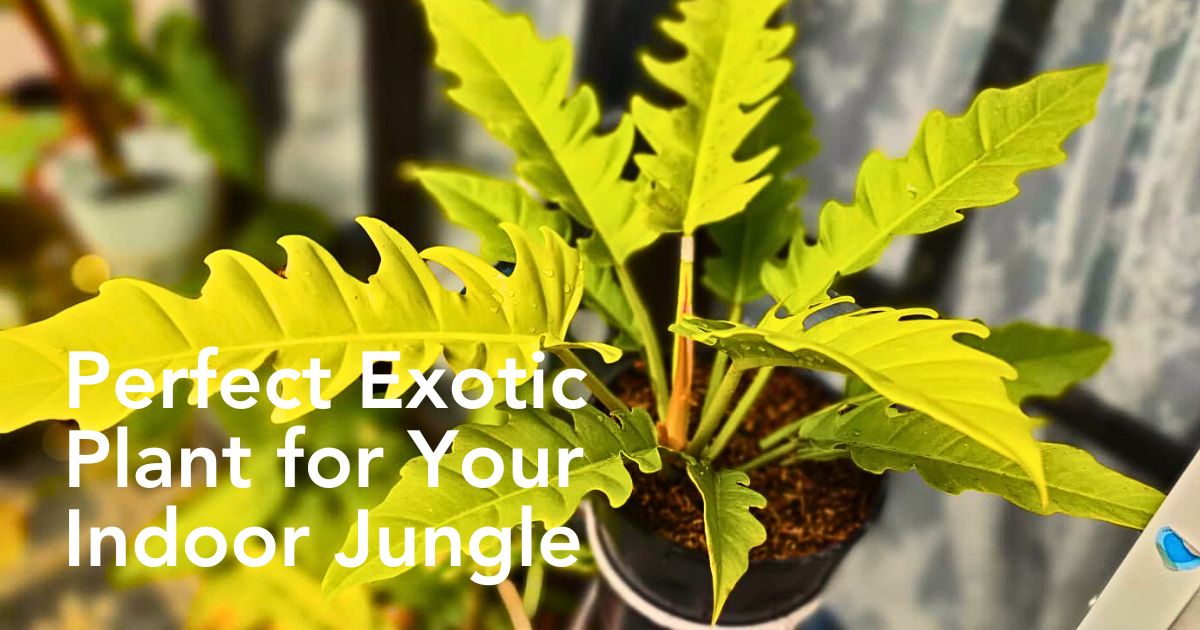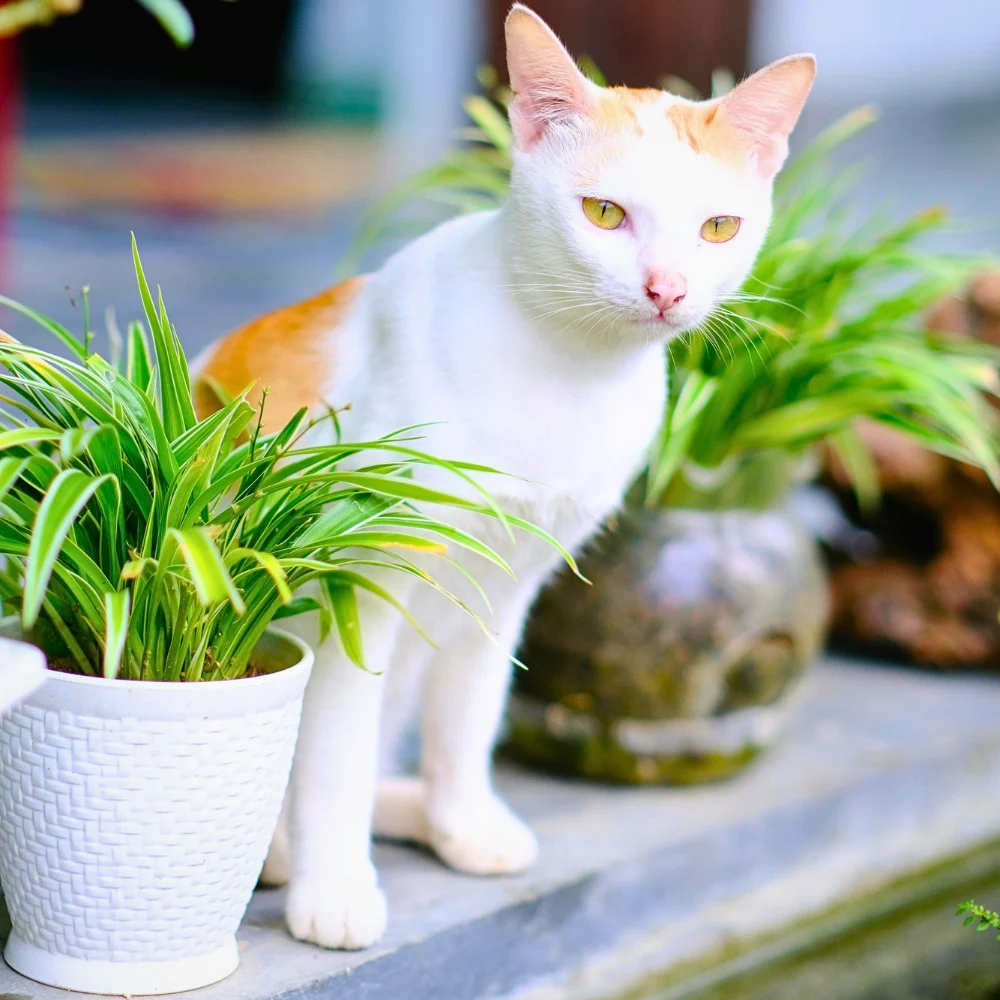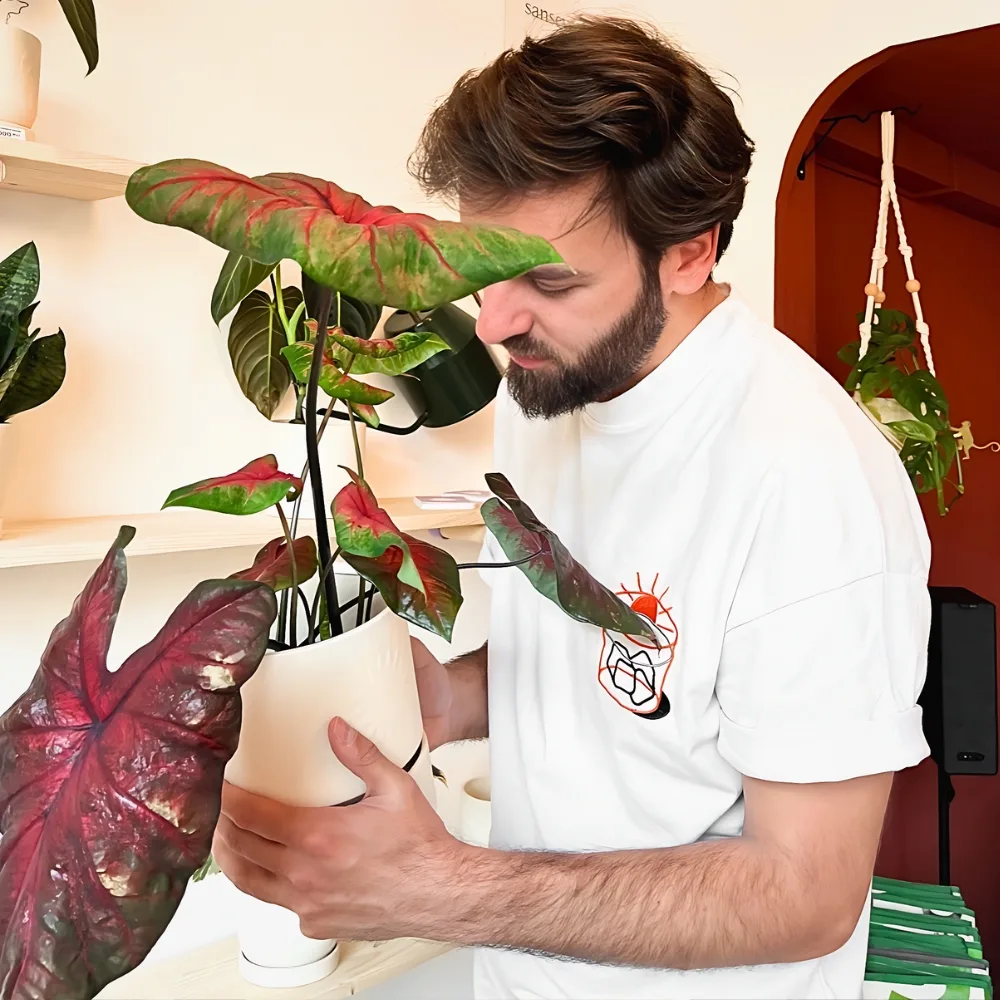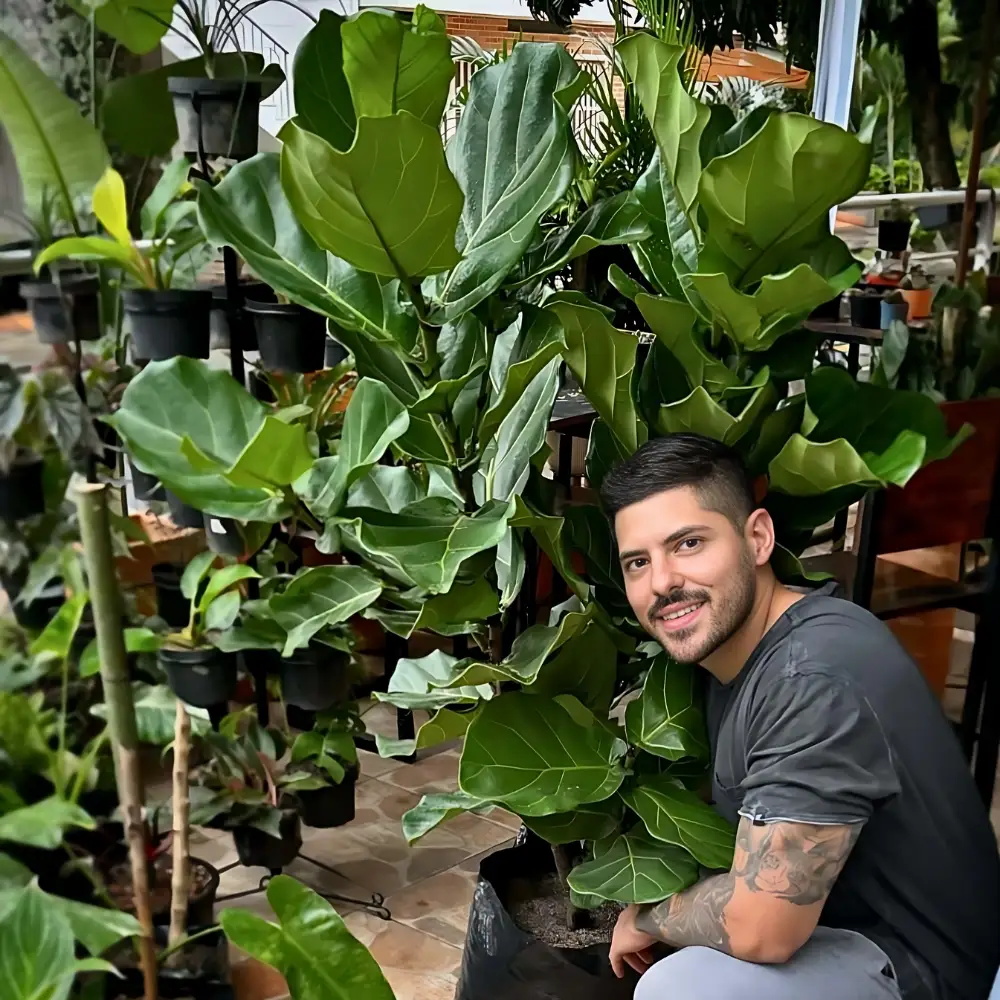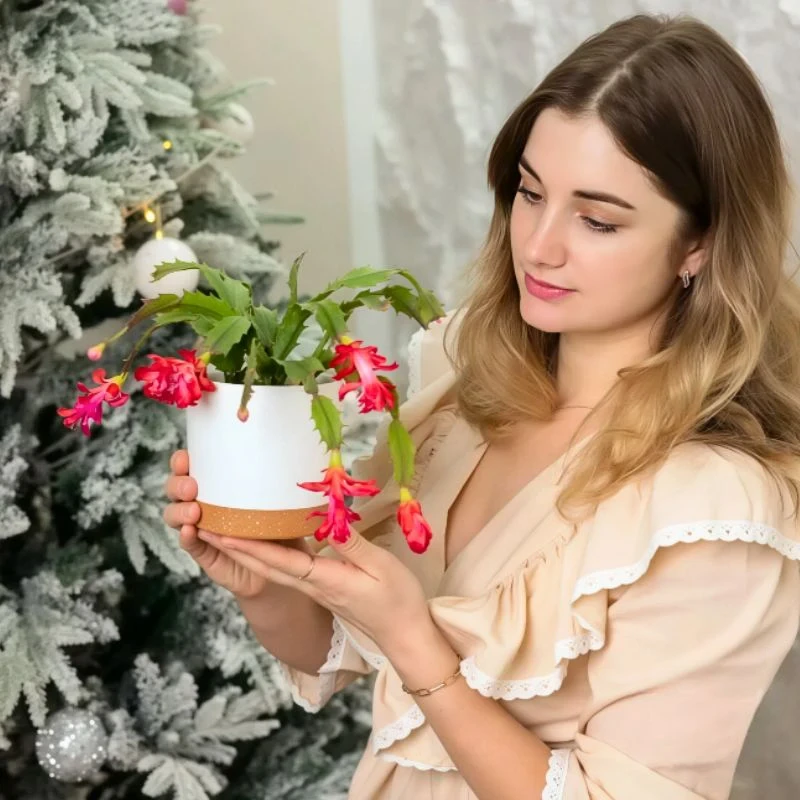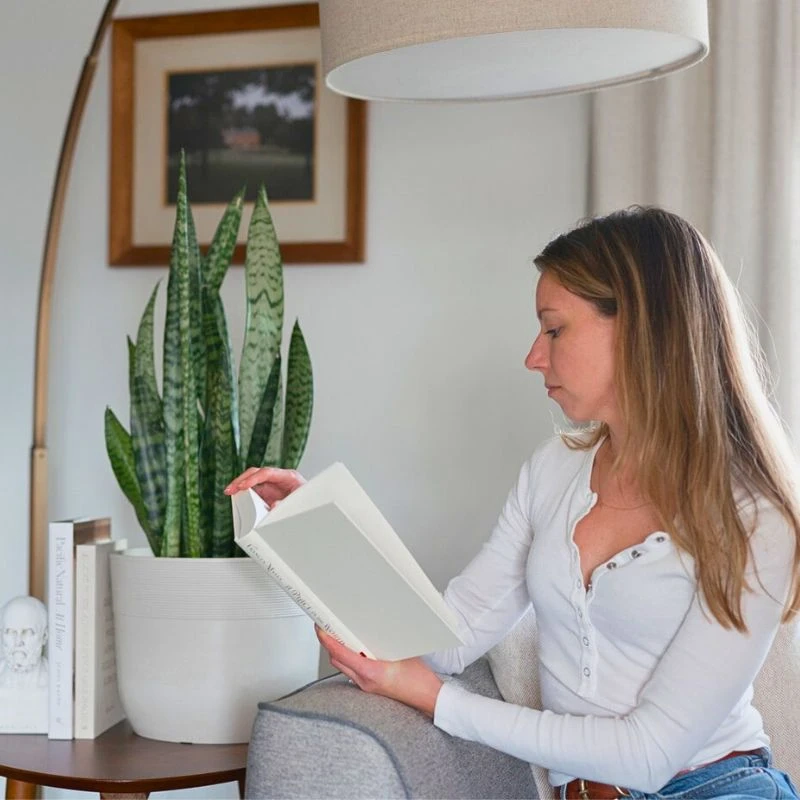The Philodendron Ring of Fire is a rare and sought-after plant known for its striking variegated foliage. This unique plant, believed to be a hybrid of Philodendron wendlandii and Philodendron tortum lights up any indoor space with its vibrant foliage. Its leaves, a mesmerizing blend of deep greens, fiery oranges, and hints of red, pink, or yellow, against a backdrop of deep green leaves, make this plant a true gem, often creating a dramatic display that is hard to ignore.
But aside from its striking appearance, the ring of fire Philodendron offers a fascinating narrative about resilience, adaptability, and the great influence of plants in indoor spaces. It is one of those variegated plants that you'd simply love because not only does it add a touch of tropical flair to the household with its unique foliage, but it also emphasizes the notion of why plants are essential in homes, including in the living room, lounge, office, and other indoor areas.
What Is the Ring of Fire Philodendron?
The variegated Philodendron Ring of Fire—sometimes referred to as Philodendron bipinnatifidum x selloum—is a hybrid Philodendron admired for its dramatic foliage. Each leaf is a unique masterpiece, blending rich colors, depending on light and maturity—the intensity of the plant’s coloration can vary depending on sunlight exposure and other growing conditions. But unlike most Philodendrons, this variety’s leaves are deeply lobed and slightly ruffled, giving it a wild and untamed aesthetic.
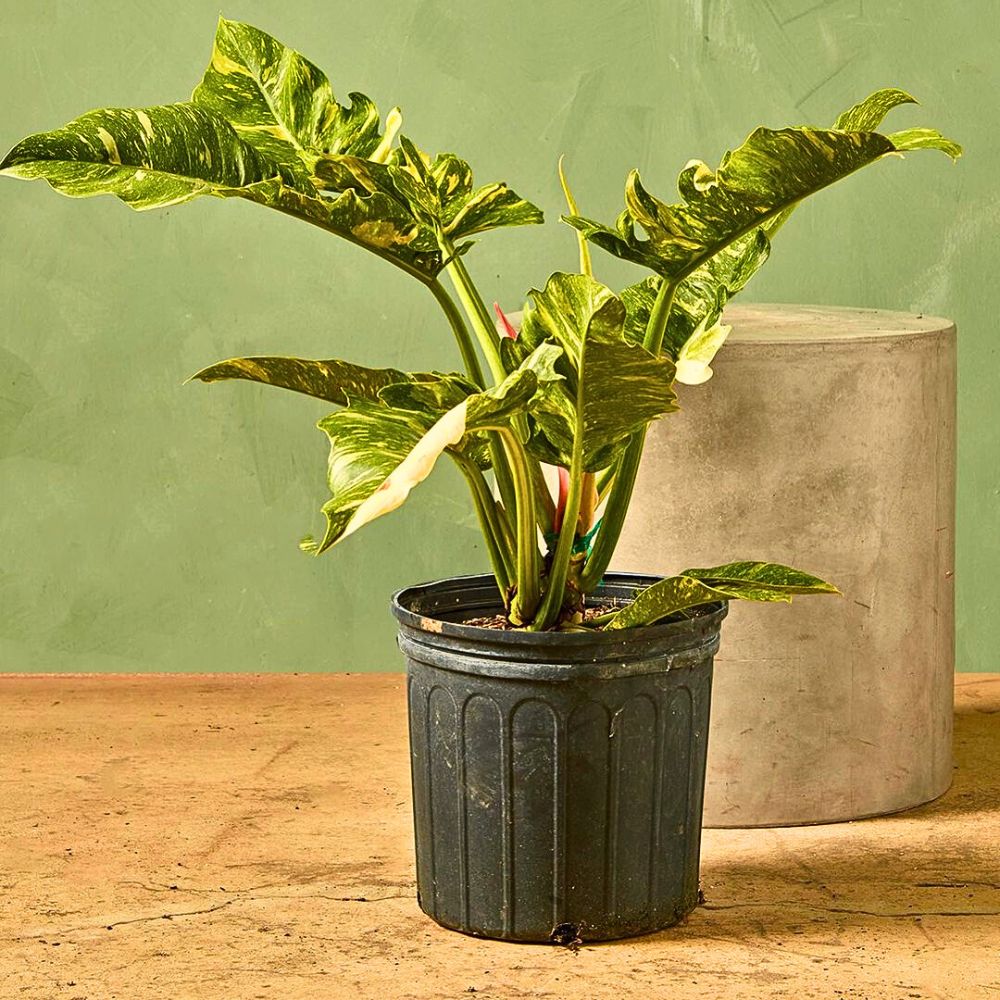
Originating from tropical regions of South America, the Philodendron Ring of Fire Variegata thrives in warm, humid environments. Its map of growing zones generally cuts across, practically, all regions. But its true charm lies in its unpredictability: practically no two plants develop the same variegation pattern, making each one unique in its own way. This variegation is essentially what makes it highly sought after among plant enthusiasts.
The ring of fire Philodendron belongs to the Araceae family, which is a large and diverse group of flowering plants commonly known as the Arum family. This family includes other popular houseplants like the calla lily (Zantedeschia), Angel Wing (Caladium), Swiss Cheese Plant (Monstera), and Elephant Ear (Colocasia). As a hybrid within the Philodendron genus, it shares characteristics with its parent species but is cultivated for its unique variegated foliage, showcasing its vibrant colors reminiscent of orange flames. It, however, still retains the typical traits of other Philodendrons in terms of growth habits and care requirements.
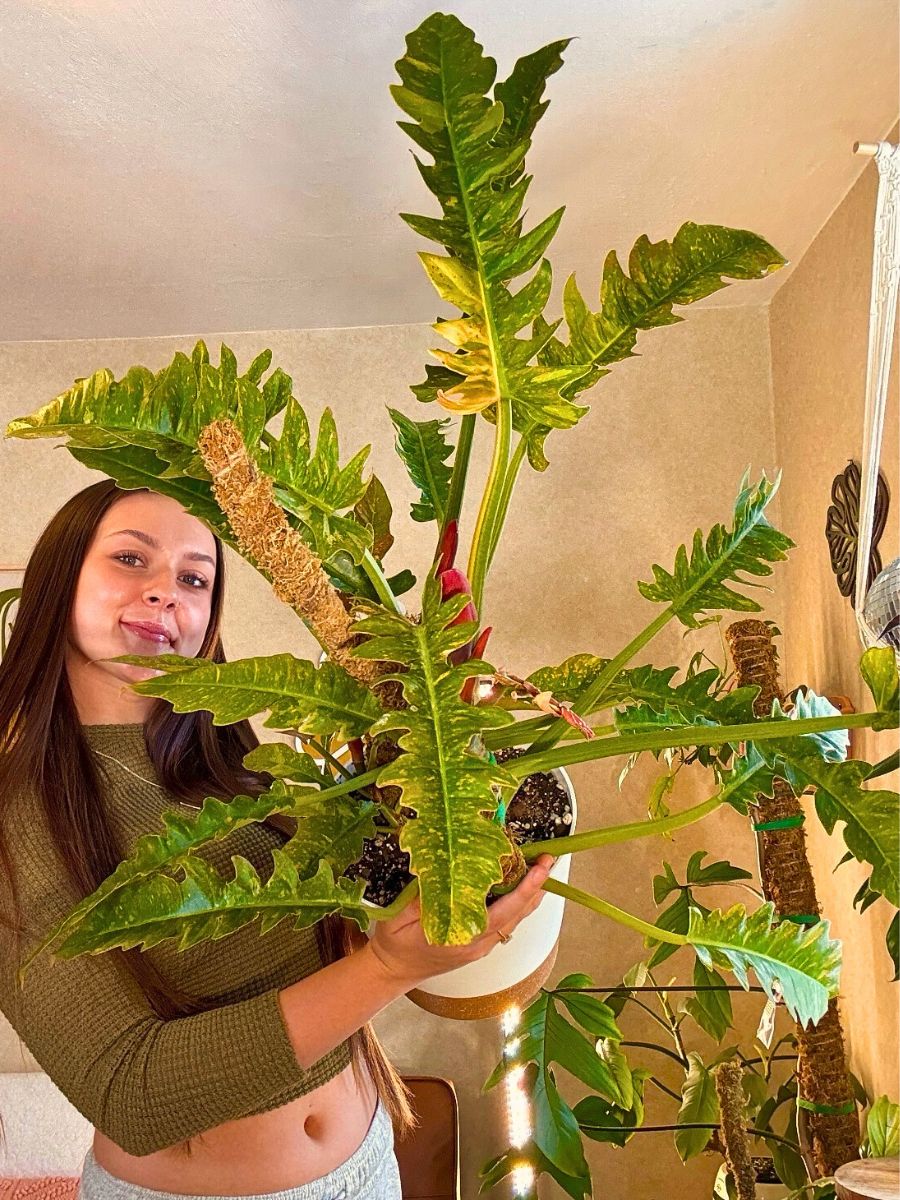
A Closer Look at the Philodendron Ring of Fire
A common question among growers is: "Does the Philodendron Ring of Fire climb?" The answer is nuanced. While younger plants exhibit a more upright, self-heading growth habit, a mature ring of fire Philodendron can develop a semi-climbing tendency. Their stems may begin to sprawl or trail, especially if given a moss pole or trellis to grip. This climbing behavior allows the plant to reach toward light sources, mimicking its natural rainforest habitat where it might ascend trees.
Essentially, the Philodendron Ring of Fire generally exhibits a climbing or vining habit, making it adaptable to various display methods. Its evergreen nature allows it to be trained to climb up a support structure or to trail from a hanging basket. And, when given the proper support, this plant can grow quite large and reach impressive heights, with a maximum height of 8 feet and a width of 6 feet. So, if one asks if the Philodendron Ring of Fire is a climber, then the answer would be yes. However, its climbing habit is less pronounced than some other Philodendron species.
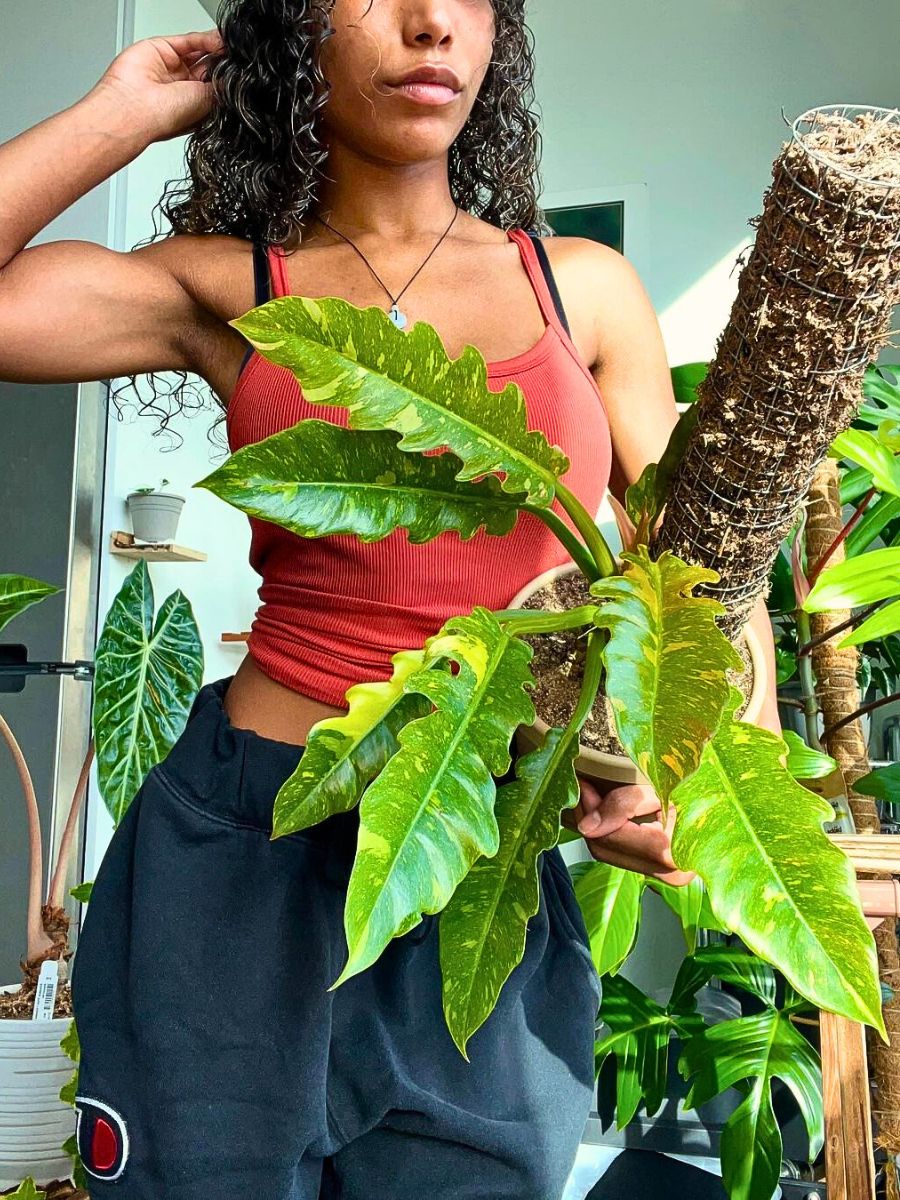
But, its climbing habit can be managed through pruning and the choice of support. Providing support, such as a pole or trellis, will encourage its natural growth habit and allow it to reach its full potential. This support will also help showcase the beauty of its leaves as they unfurl and cascade downwards. Even more notably, the plant will naturally grow upwards, reaching impressive heights with the right kind of support. To encourage this vertical growth, provide a support structure early on. Not only does this enhance the plant’s visual drama, but it also promotes larger leaf development and better air circulation around the foliage.
Ring of Fire Philodendron Care
The Philodendron Ring of Fire care is relatively straightforward, but it does require attention to detail to ensure it thrives. Caring for a variegated Philodendron Ring of Fire plant particularly requires balancing its tropical needs with the realities of indoor growing.
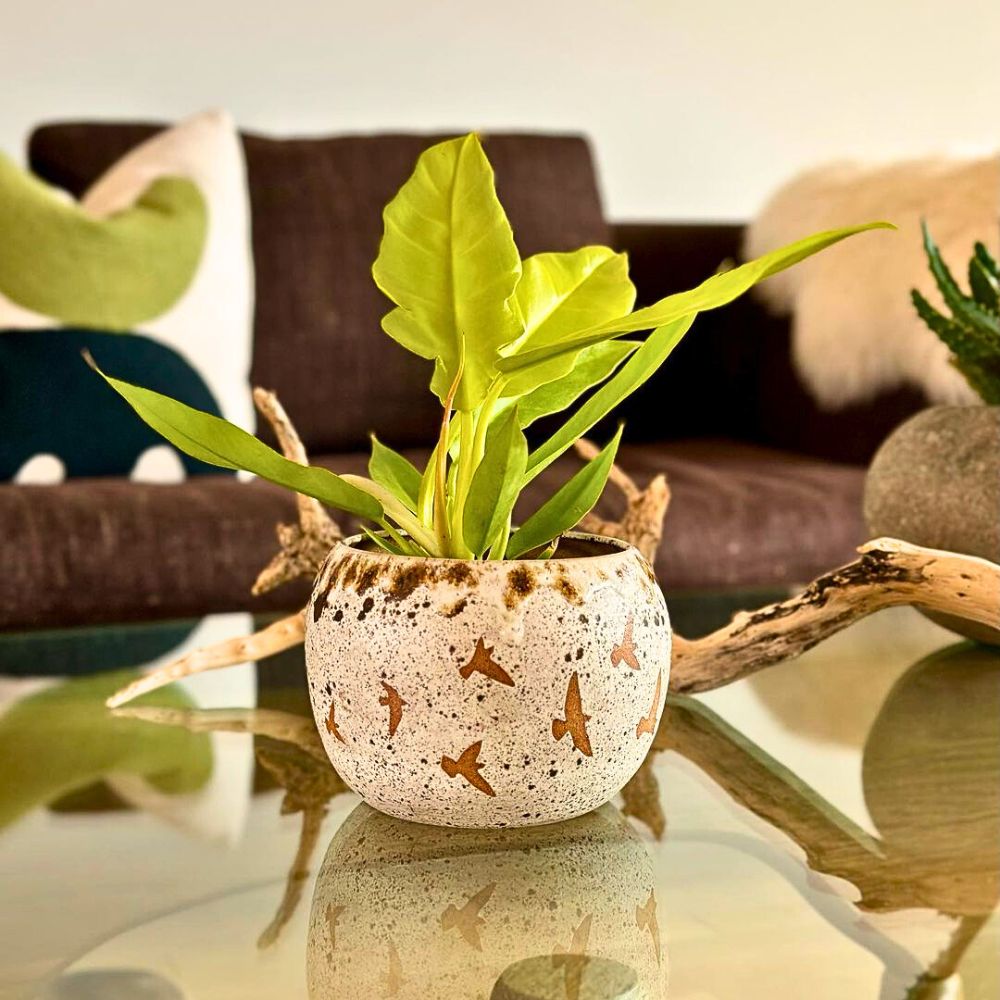
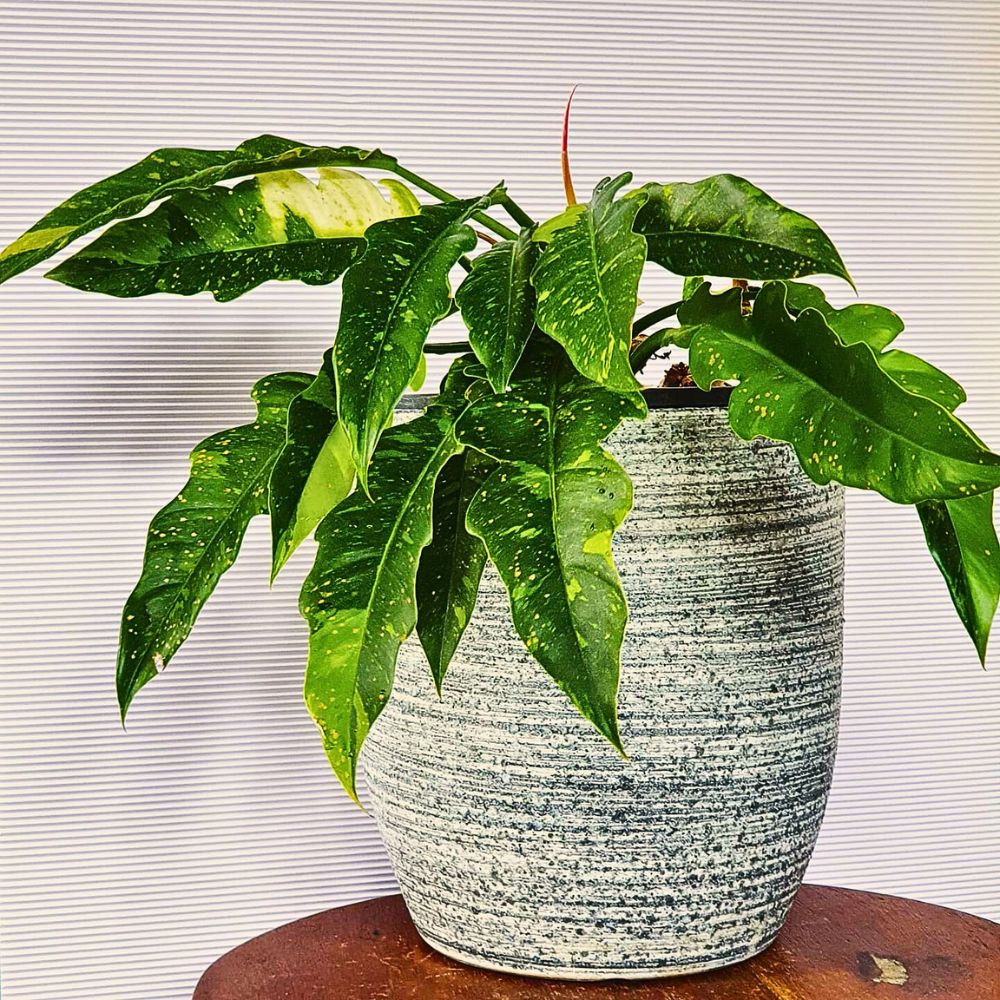
Light Requirements for Healthy Philodendron Ring of Fire Growth
The Philodendron Ring of Fire requires just enough light. It craves bright, indirect bright light to maintain its vivid variegation. While it can tolerate some morning direct sunlight, prolonged exposure to harsh afternoon sun can scorch its delicate leaves. Too little light, on the other hand, causes its leaves to revert to solid green. A spot near a west or east-facing window is ideal. If your indoor space lacks natural sufficient light—or bright indirect light—consider using grow lights to supplement natural light, ensuring the plant receives 8-12 hours of light daily. You could, also, use sheer curtains to filter harsh afternoon rays.
Watering Consistency Is Key for your Ring of Fire Care
Watering is a crucial aspect of the Philodendron Ring of Fire care. Allow the 5-7 top centimeters (2-3 inches) of the soil in which it is planted to dry out between waterings. Excess water or overwatering can lead to root rot, so it is essential to ensure that the pot has proper drainage. Underwatering, on the other hand, stresses the plant, causing leaf drop. A moisture meter can be a helpful tool to gauge when it's time to water. Also, use well-draining soil (a mix of peat, perlite, and orchid bark works well) and ensure their pots have drainage holes).
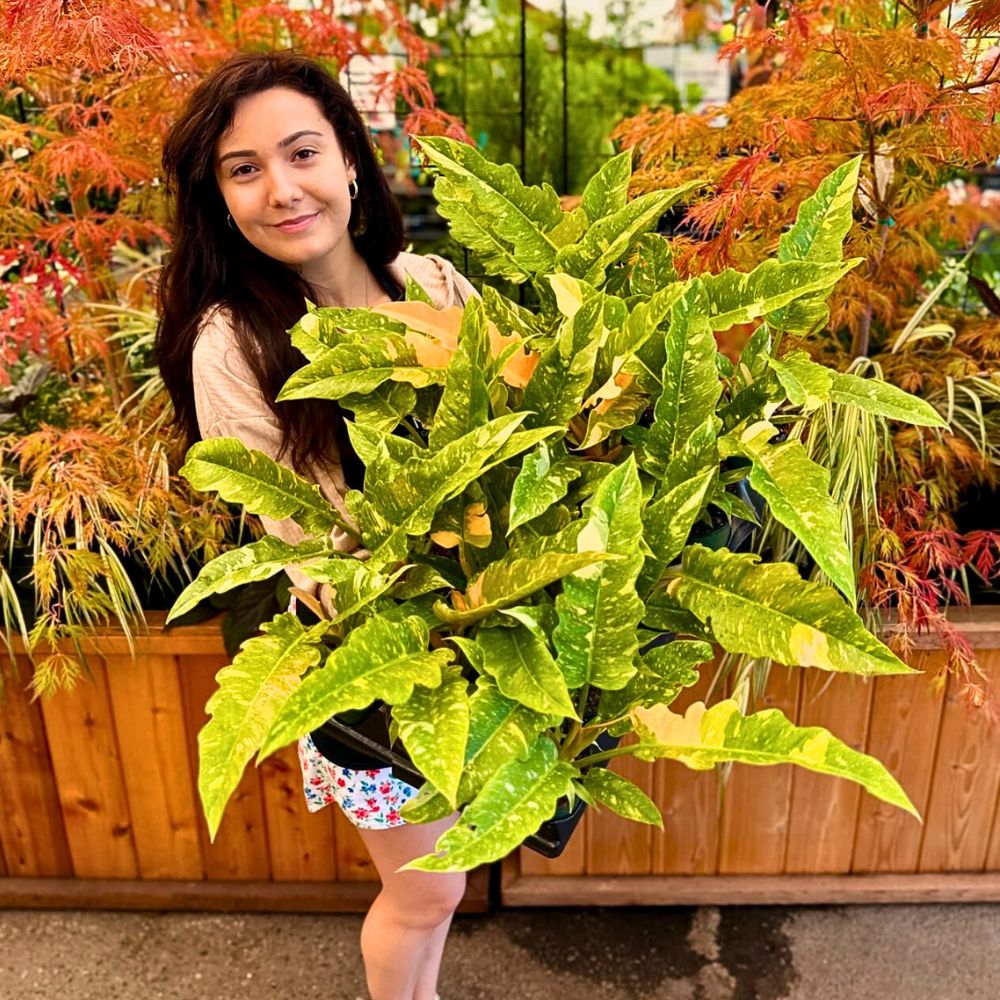
Humidity and Temperature Needed for Ring of Fire Philodendron
This tropical plant thrives in higher humidity levels, ideally between 60-80%. If your indoor environment is dry, consider using a humidifier or placing a pebble tray filled with water beneath the pot to increase humidity. Regular misting helps to replicate jungle conditions, where the plant naturally thrives. The ideal temperature range for the Philodendron Ring of Fire is between 18°C to 27°C (65°F to 80°F). Avoid exposing the plant to sudden temperature fluctuations or drafts. Also, note that brown leaf tips on the plant signal dry air.
Soil Requirements for Philodendron Ring of Fire
The Philodendron Ring of Fire grows well in, and prefers potting soil that is rich in organic matter. A soilless mix or a blend designed for aroids is ideal. You can also create your own mix by combining equal parts potting soil, coco coir, orchid bark, and perlite. This ensures good aeration and drainage, which are vital for the plant's health. Also, remember to always allow the soil to drain well when watering the plant.
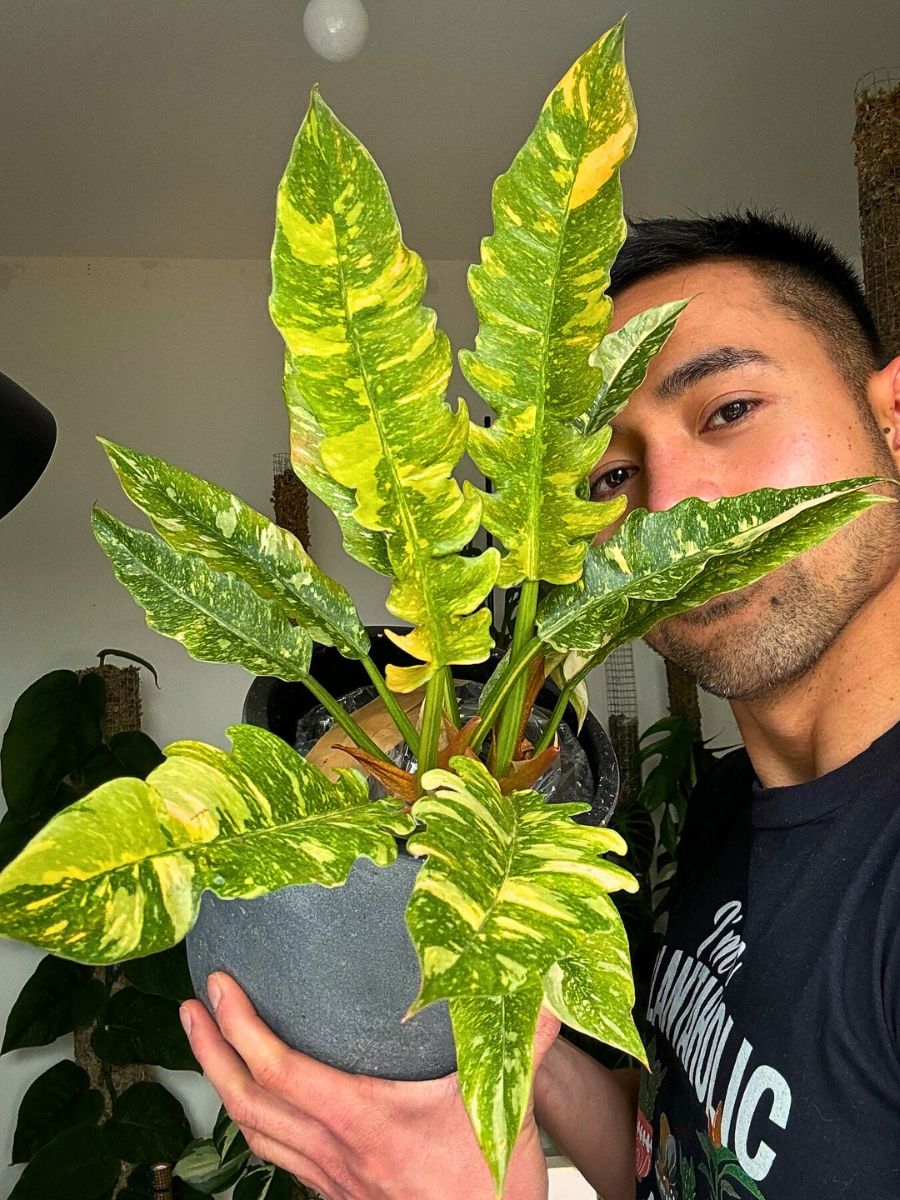
Fertilization to Promote Healthy Philodendron Ring of Fire Growth
To keep the vibrant colors of the variegated Philodendron Ring of Fire strong, feed the plant with a balanced liquid fertilizer at least once a month during the growing season, which is typically in spring and summer. Reduce or stop fertilization during the fall and winter months when the plant is dormant, or its growing slows down.
Pruning and Maintenance of the Philodendron Ring of Fire
Pruning is, generally, important to ensure that the Philodendron Ring of Fire thrives. You can do this by removing yellowing leaves to redirect energy to the plant’s healthy growth. This guarantees that the Philodendron Ring of Fire grows much more robustly. Also, wipe the dust off the leaves to maximize photosynthesis.
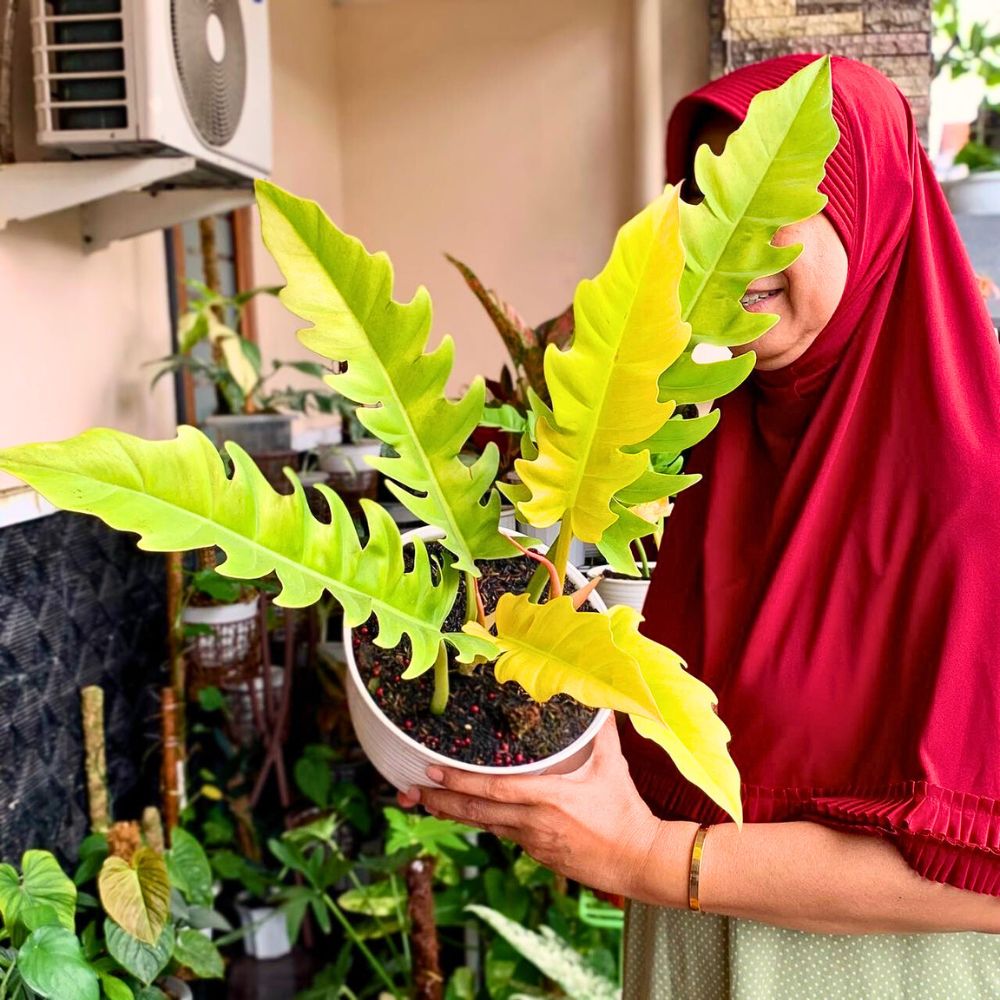
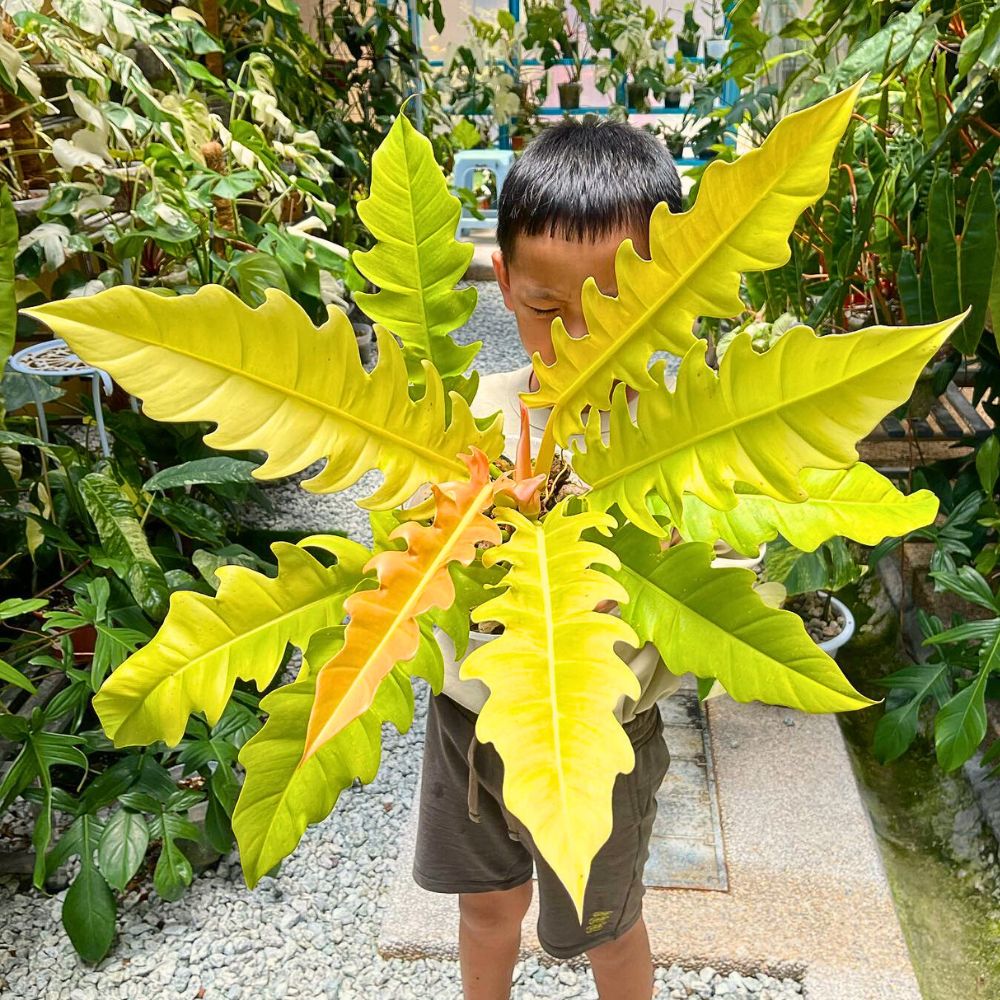
Potting and Repotting the Philodendron Ring of Fire
When potting the Philodendron Ring of Fire use a well-draining potting mix rich in organic matter to ensure adequate drainage. Also, be sure to repot the plant every 1-2 years or when it outgrows its current container, typically in spring. Remember to choose a pot one size larger than the current one to accommodate the plant's growing roots system.
How to Propagate the Philodendron Ring of Fire
As a houseplant enthusiast, being able to propagate the ring of fire variegated Philodendron could be rewarding but requires patience due to its slow growth. Propagating the houseplant nonetheless, allows one to expand their plant collection and even share this stunning plant with others. Thus, the most common method through which the Philodendron Ring of Fire can be propagated is through stem cuttings.

A Step-By-Step Propagation Guide to Propagate the Philodendron Ring of Fire
- Select a healthy stem, choosing a stem cutting with at least two nodes and a few leaves.
- Cut using sharp, clean pruning shears to ensure you make a clean cut just below a node.
- Remove the lower leaves to expose the nodes, leaving a few leaves at the top.
- Place the cutting in a glass of water, ensuring the nodes are submerged. Ensure you change the water regularly.
- Then, wait for the roots which will typically develop within a few weeks.
- Once the roots are about an inch long, transplant the cutting into the ideal potting mix, ensuring all requirements including adequate sunlight, are available.
Pro Tips for Growing Philodendron Ring of Fire Successfully
- Timing is important. Ensure your ring of fire Philodendron propagation process is done during the spring or early summer when the plant is actively growing.
- Patience is also key. Be patient with the plant as the Philodendron Ring of Fire is a relatively slow-growing plant.
- Variegated sections have less chlorophyll, so opt for cuttings with some green to ensure successful photosynthesis.
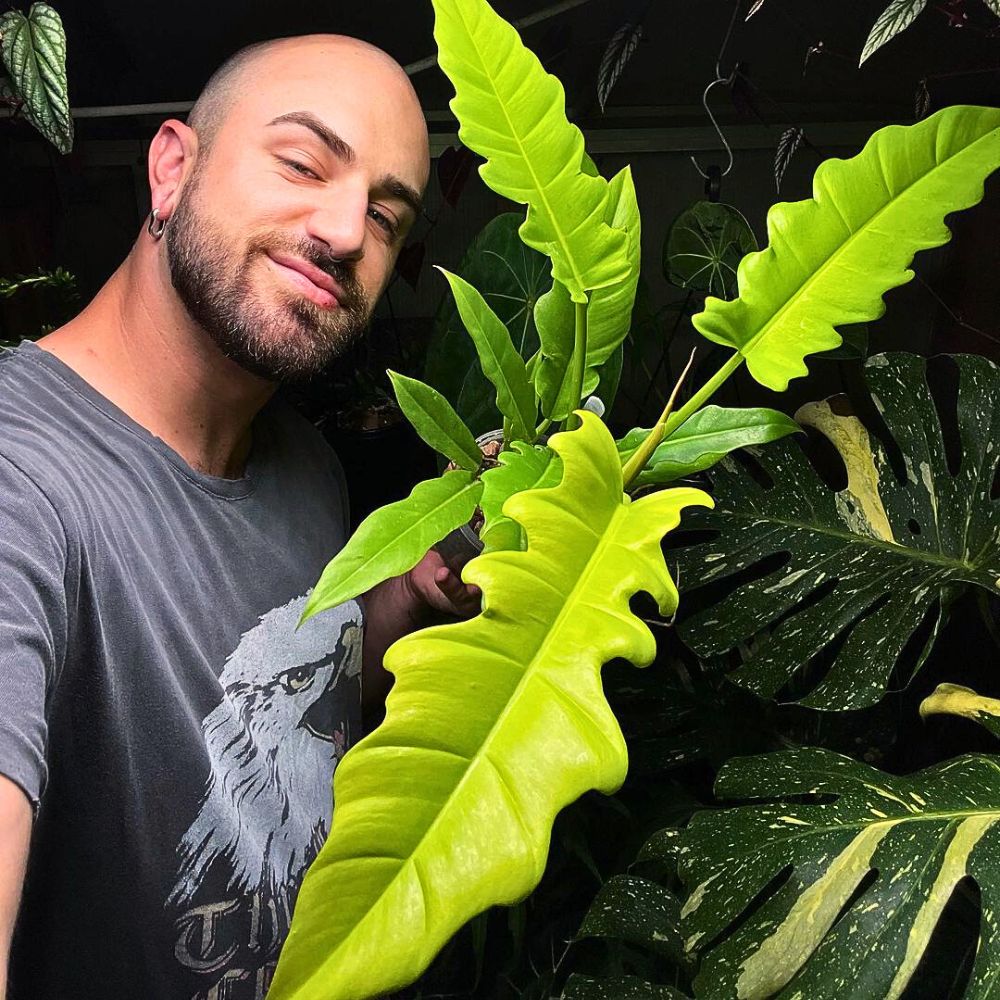
Troubleshooting Common Philodendron Ring of Fire Problems and Addressing Them
While relatively low-maintenance, the Philodendron Ring of Fire can encounter some common problems.
- Yellowing of the leaves is one of the most common problems of the plant and could indicate overwatering, underwatering, or insufficient light. Adjust your watering schedule and light exposure accordingly to ensure your Philodendron Ring of Fire does not have yellowing leaves.
- Brown leaf tips on the plants are often a sign of low humidity or underwatering. In this case, increase humidity and adjust the watering of the ring of fire Philodendron.
- Pests are, also, another challenge. Regularly inspect your plant for pests like spider mites, mealybugs, or scale, and infestations like root rot. Treat these infestations promptly with insecticidal soap or neem oil, and other suitable treatment regimens, to ensure your Philodendron Ring of Fire thrives well.
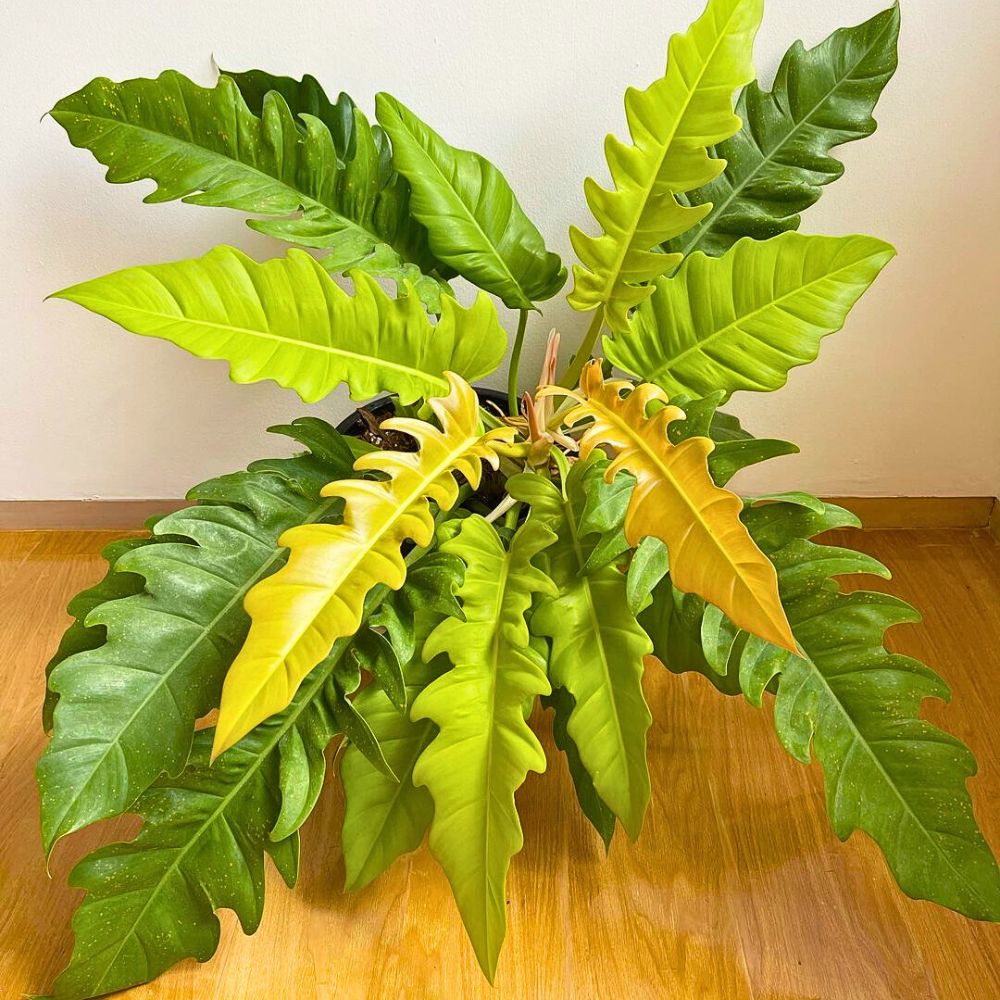
Incorporating the Philodendron Ring of Fire in Your Spaces
Incorporating the Philodendron Ring of Fire into your indoor spaces can significantly enhance both the aesthetic appeal and the overall atmosphere of your environment. This striking plant, known for its vibrant and variegated foliage, offers several benefits and strategies for successful integration into your home or office.
The Philodendron Ring of Fire features a unique blend of colors, making it a visually stunning addition to any indoor space. Its large, lobed leaves can serve as a focal point in your decor. Also, like many houseplants, the ring of fire Philodendron helps improve indoor air quality by filtering out harmful toxins and releasing oxygen, contributing to a healthier living environment.
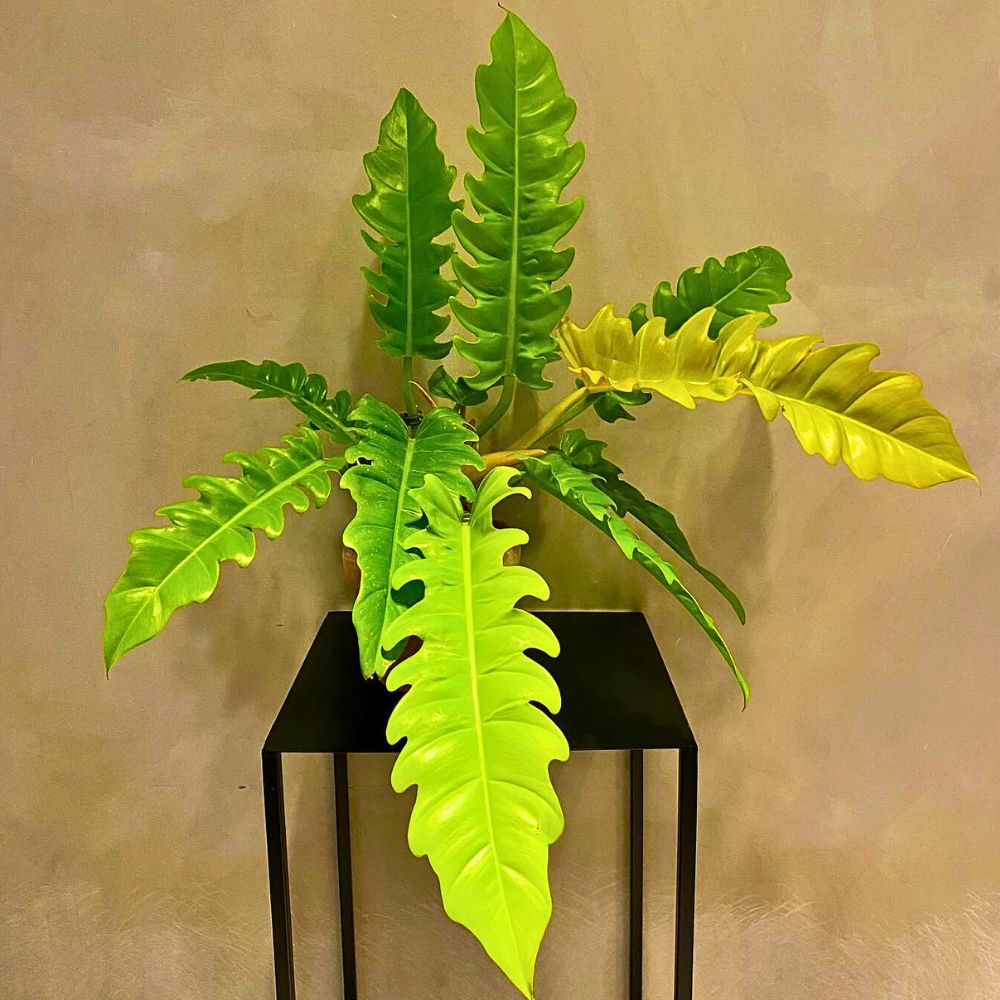
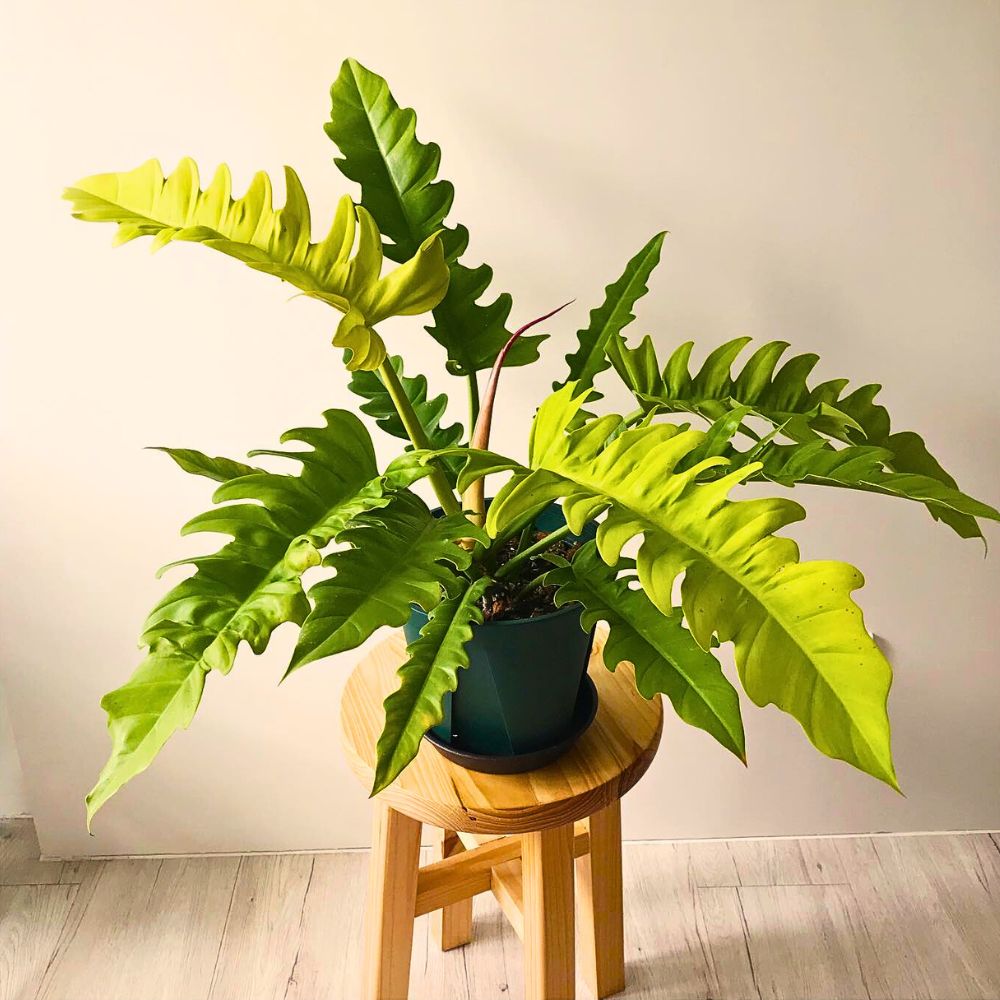
What is more, this plant can increase humidity levels in your home, which is particularly beneficial in dry indoor environments. A light misting of its leaves not only helps the plant thrive but also adds moisture to the air, which can be soothing for the skin and respiratory systems. Plus, the Philodendron Ring of Fire is relatively easy to care for which makes it suitable for both novice and experienced plant enthusiasts.
To incorporate this plant in your indoor spaces, place your ring of fire Philodendron in a spot that receives bright, indirect light, but avoid direct sunlight, which can scorch its leaves. Ideal locations include near east or west-facing windows. Select a pot with drainage holes to prevent waterlogging, as this plant is sensitive to overwatering. Consider decorative pots that complement your interior design while providing the necessary drainage.
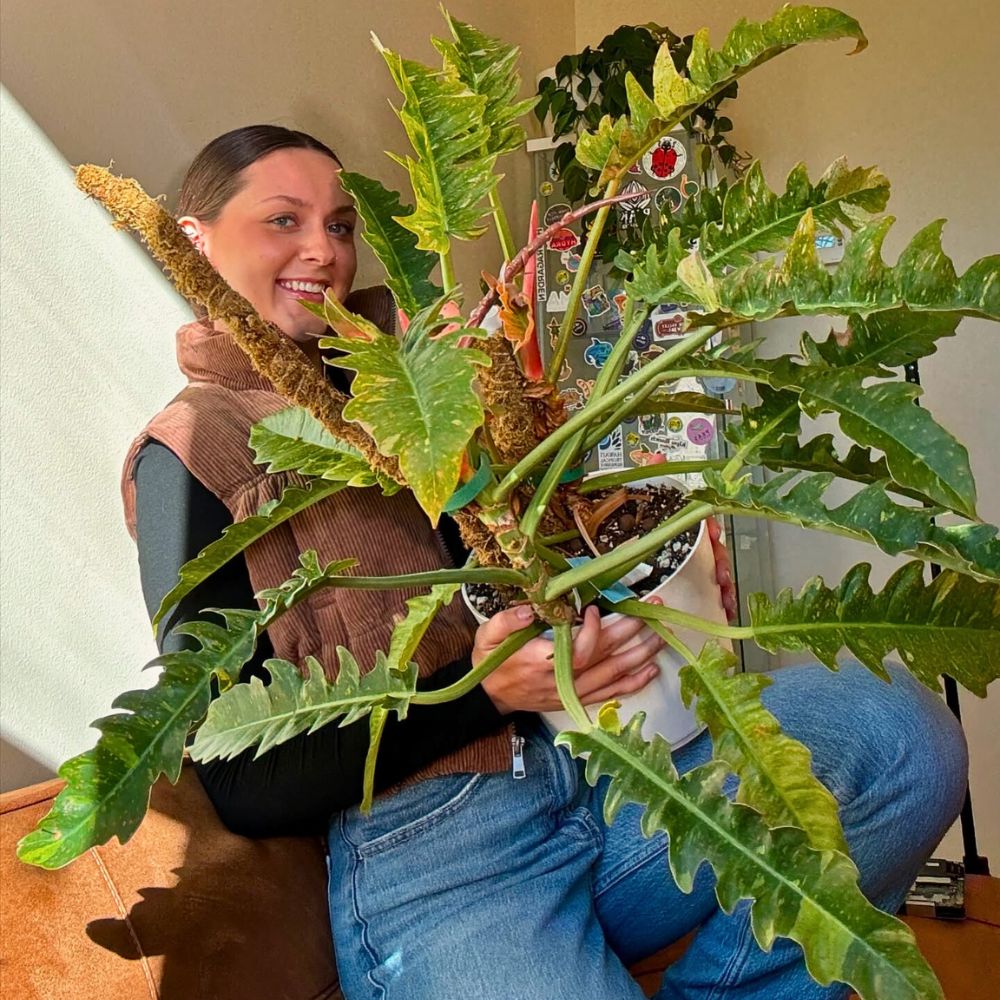
Since the Philodendron Ring of Fire is a climber, consider using a moss pole or trellis to support its growth. This not only enhances its appearance but also mimics its natural growth habit, allowing it to reach impressive heights. And, to create a lush indoor jungle feel, group the ring of fire Philodendron with other houseplants that thrive in similar conditions. This can enhance humidity levels and create a more vibrant atmosphere. Lastly, ensure you follow proper care guidelines, including allowing the few top inches of soil to dry out between waterings and providing monthly fertilization during the growing season. This will help maintain its vibrant colors and overall health.
Feature image by @manyplantsandcounting, header image by @kebun_rosebailey

